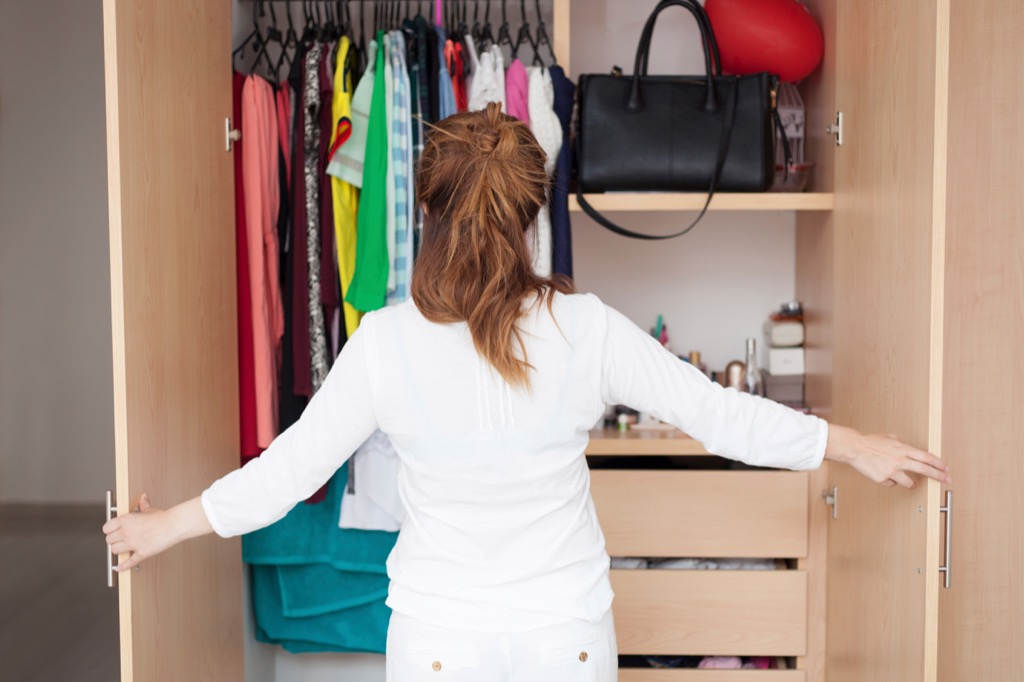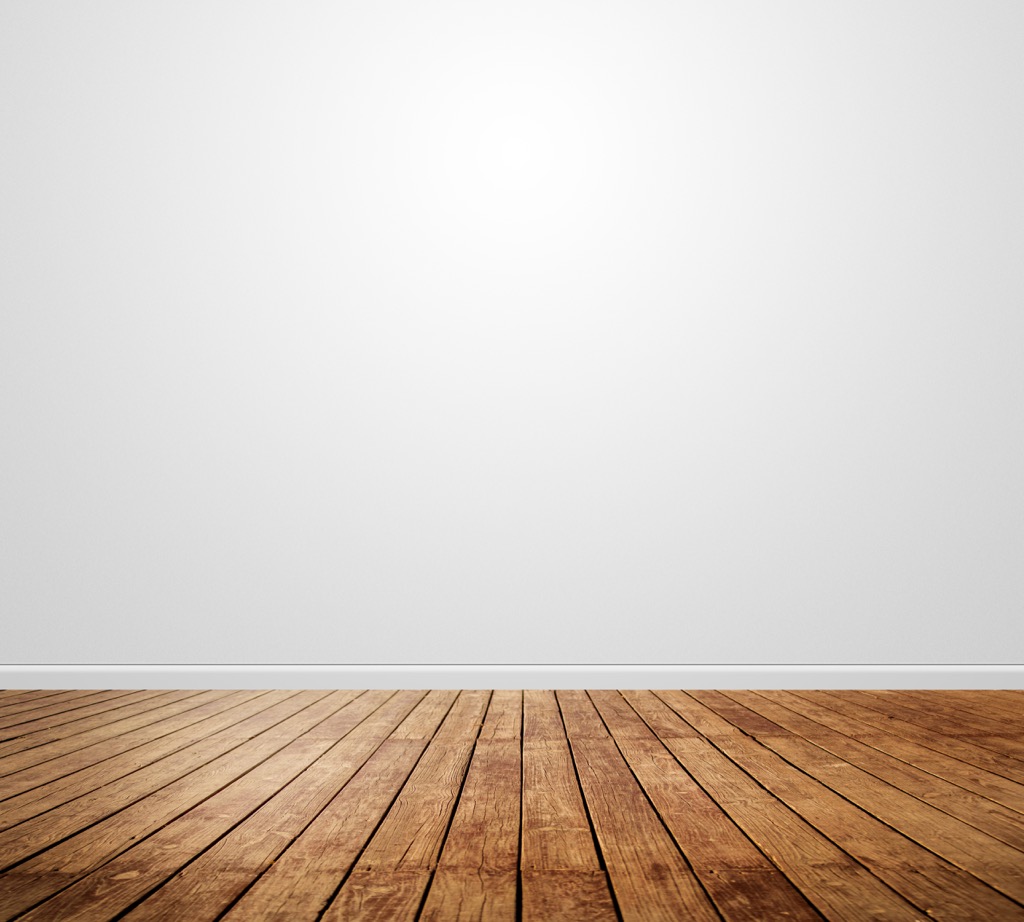15 Genius Tricks for Making Any Small Room Feel Huge

Your home is your personal sanctuary. But, if you’re confined to a 300-square-foot studio apartment, or if you’re sleeping in a box the size of your wingspan, or if you’re toiling away in a home office that’s a fraction of the size of your real one, no one would blame you for wanting more.
Unfortunately, you can’t exactly create more space out of nothing. (Thanks a lot, zoning laws…) What you can do, however, is create the illusion of more space. By deploying tried-and-true tricks of the trade, you can instantly turn a sardines-in-a-tin-can home into a picture-perfect cavernous enclave of luxuriousness. Here’s how.
1
Use a clutter basket.

Clutter baskets are a great way to quickly knock out a session of tidying up. (And if you have kids, you ought to consider a clutter basket an essential item. In fact, you might even want to get one for each room in the house!) Basically, if the name didn’t already give it away, clutter baskets act as a place to store everything you don’t really have a spot for: toys, magazines, extra blankets, all that jazz. And don’t worry about ruining your decor. Pretty much every home goods retailer on the market these days has chic options among their wares.
2
Paint the walls white.

It’s a well-known fact that white makes everything look bigger. Going color-free adds a sense of cleanliness and openness to any room. As interior designer Bruce Bierman told Architectural Digest, “White paint scatters light uniformly in all directions, which is why it covers the wall more efficiently than any other color. But of course, some whites can be very sharp, so you want to look out for this. If I were doing a loft with a skylight, or another space with a lot of natural light, I wouldn’t choose a stark white because it would be too glaring.”
3
Use mounted shelves.

For a great space-saver, hang shelves on your walls, rather than buying a cumbersome bookshelf. This method allows you to shelve all the things you’d normally shelve while saving valuable square footage. Bonus: with a stylish option, like IKEA’s Lack ($8 per shelf), it can also make your room look a thousand times better. Oh, and while you’re at it, mount your TV, too. You’ll save extra space that would otherwise be used on an entertainment center.
4
Hang an accent piece.

When it comes to decorating small spaces, less is more. Refrain from filling your walls with a bunch of small decorations, and instead choose one large art piece for the eye to focus on. Some empty wall space will open up the room. Neila Deen, founder of Urban Casa, says, “Choose one aspect of the room to highlight with something visually interesting. The eye will be immediately drawn to this standout feature, with less emphasis on the room’s challenging size.”
5
Declutter.

Before you purchase anything new to make your space feel bigger, get rid of old stuff. We all have things lying around our house that we don’t use anymore. If you need an extra push to help you get rid of all those extra sweaters that you haven’t worn in years, consider donating them. If you think about all of the people in need, you’re more likely to start purging your closets. According to the experts at House Beautiful, when it comes to decluttering it helps to separate your items into three piles to help you decide what to keep, what to get rid of, and what to put into storage.
6
Add mirrors.

There’s a reason this is one of the oldest tricks in the book: it actually works. Adding a mirror (or, better yet, mirrors) is certain to make any space instantly appear bigger. Mirrors trick the eye into perceiving that a room is larger twofold—one, by adding depth to what you’re looking at; two, by bouncing light into all corners of the room. And best of all, slating a mirror on your wall is just another excuse to invest in an aesthetic accessory. For some affordable stylish options, check out the 23 Amazing Home Decor Items You Won’t Believe Are From Walmart.
7
Use minimal furniture.

Take note of how much space you’re working with and don’t try to fit as much furniture as you would in a cavernous living room. This will only result in your cramped, small space feeling even more cramped and small than it currently is. According to the experts at One Kings Lane, choosing a sectional instead of a sofa and set of armchairs will maximize the limited space in a small living room. Multifunctional furniture, too, is a good idea. Save space by choosing an ottoman that doubles as a table, or selecting chairs equipped with storage under the seat. Bonus: these moves will save you money in the end.
8
Let natural light in.

Nothing opens a space up (and provides an instant happiness boost) like natural light. Thankfully, getting more of it is as easy as pie: just forgo curtains. Unless we’re talking about your bedroom and you needing to make sure early morning rays don’t wake you up, curtains frankly aren’t necessary.
9
Take advantage of closets.

When it comes to making a room feel bigger, it’s essential to minimize how much stuff you have out. Leaving objects all around can cause your room to look more cluttered and even smaller than it already is. So, keep as much as you can hidden away in your closets. And if your closet takes after the smallness of your room and is too tiny to fit everything, start thinking about storing things in other hidden places—like under your bed.
10
Store things under your bed.

Don’t sleep on under-bed storage: If you have a small bedroom, it’s key. Let’s say you’re working with a queen-sized bed. By investing in an under-bed storage solution you’ll fabricate out of thin air about 35 square feet of storage space. Consider picking up a bed platform with built-in drawers. Or, if you’re looking to cut costs, pick up a set of nondescript bed risers ($22) and actually stylish under-bed storage boxes ($13).
11
Keep things clean.

That’s right: The lesson mom tried to impart years ago rings true to this day. If nothing is on your floor, your room will already look and feel bigger. If your shelves are spotless and everything is in its right place, that’s another step toward space-enhancing perfection. Having a dedicated space for every item you own is especially important when it comes to tiny rooms and tiny homes. Because the space you’re working with is so small, even leaving just a few things out will start to make your home feel messy and crowded.
12
Stick to solid prints.

Stay away from plaids, stripes, and bold prints. These patterns will only create chaos in a small space. When it’s time to buy a sofa, a rug, bedding, or curtains, remember to keep things simple and safe and stick to solid colors. If you’re in dire need of a decor swerve, lift a word of advice from New York City designer Doug Meyer, who suggested to Architectural Digest that using texture keeps a room full of solid colors from falling flat.
13
Add a big rug.

A small rug will only draw attention to the small size of a room. But a big rug acts as a focal point. As long as the pattern isn’t too crazy, a well-sized rug should create an effect wherein your room appears far larger. The decorating experts at One Kings Lane suggest choosing a light colored rug: “Darker rugs absorb light, while lighter tones reflect it, creating an overall sense of spaciousness.”
14
Choose foldable furniture.

If you need to save space in your kitchen, choosing a dining table with leaves that fold underneath is a smart option. That way you can seat everyone when you have people over for the holidays, but you can also open up the room by making the table smaller when you don’t need to seat as many guests. While you’re at it, pick up a foldable set of chairs, too. As these midcentury-chic chairs from Design Within Reach ($250) suggest, foldable seating needn’t lack in the aesthetic department.
15
Keep flooring continuous.

Incorporating the same flooring material throughout the whole house will create a sense of unity—and, with it, a sense of openness. According to the design mavens at Better Homes & Gardens, keeping the floor the same throughout your home will make sure that “the eye does not jump from one room to the next but rather wanders easily between the spaces.”